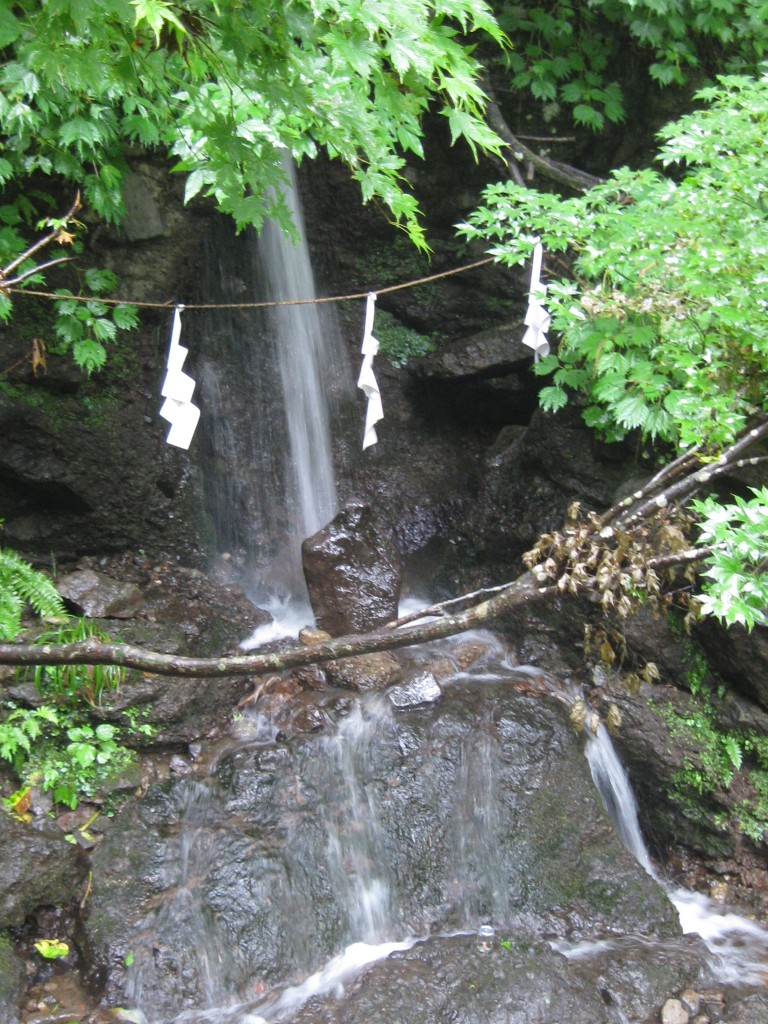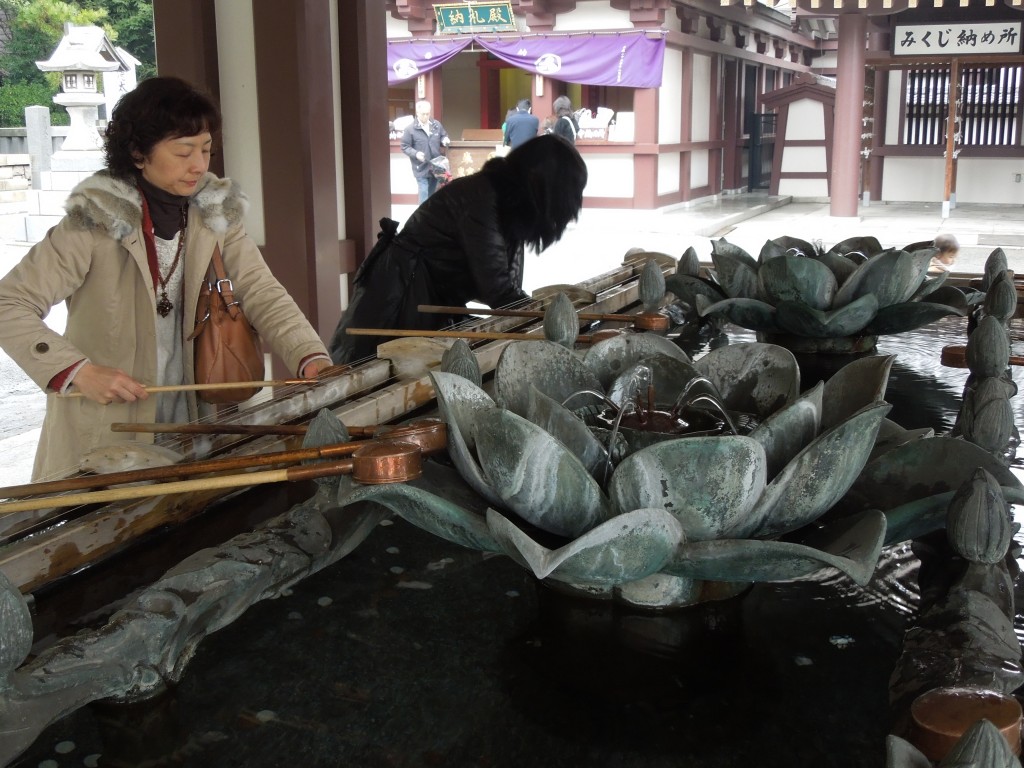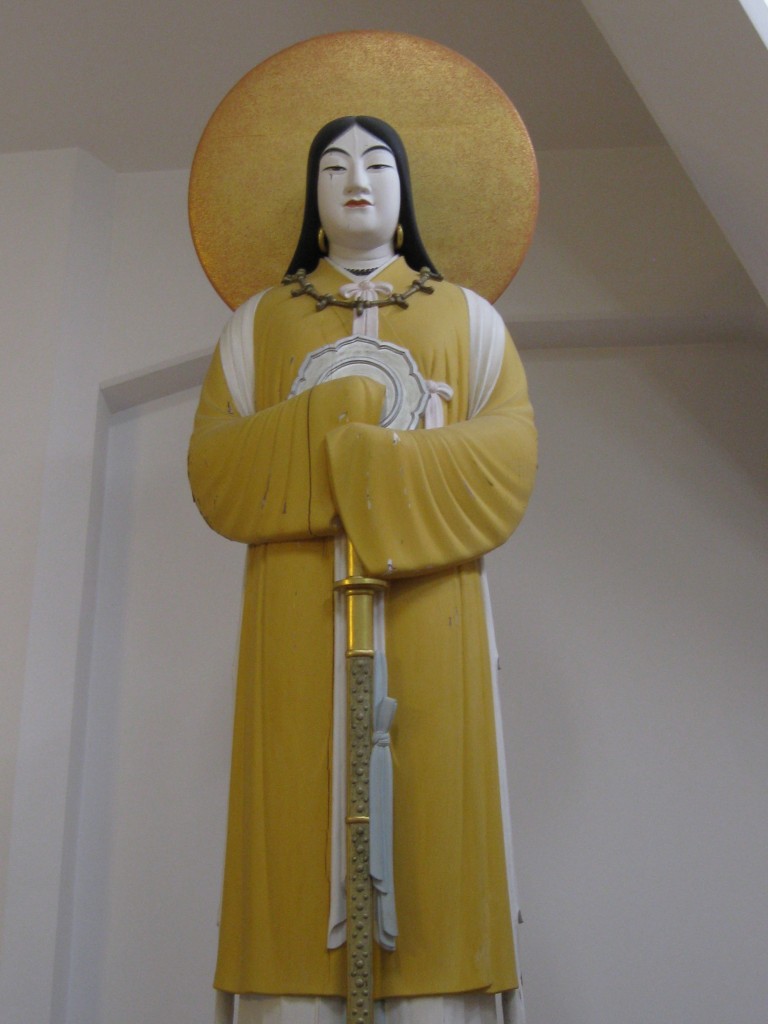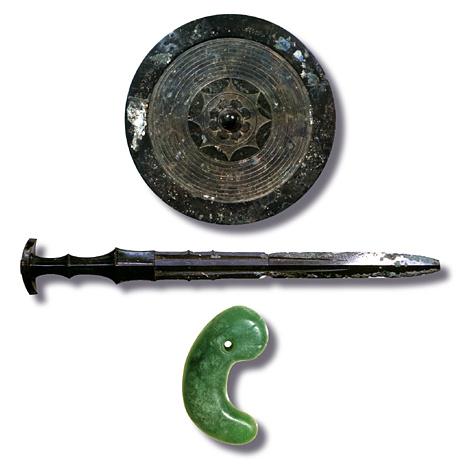
The kami of ancient Shinto were nameless, formless and numinous
In an article on the nippon.com website, religious scholar Yamaori Tetsuo puts forward his concept of a tripartite Shinto in historical terms. First was ancient Shinto, characterised by animist beliefs in a period with which many of us in the West with neo-pagan sympathies will identify. The question is, though, whether we can call it ‘Shinto’ as it predates any such term or concept.
With the introduction of Buddhism, native beliefs were affected and more than a thousand years of syncretism followed. Kami were integrated into Buddhist cosmology, and the imported religion affected rituals and practices. A Shinto-Buddhist view of life and death emerged.
The third of Yamaori’s ‘layers’ comes with the Meiji Restoration of 1868, when Shinto as we know it today was consciously assembled as a form of state ideology. The emperor and his lineage were raised to the front rank of national consciousness. Interestingly, Yamaori suggests that the elevation at this time of Amaterasu as a primal deity was a nod in the direction of Western monotheism.
**************************************************
The Three-Layered Shintō Religion
by Yamaori Tetsuo (Originally published in Japanese on February 28, 2014.)
A distinctively Japanese view of life and death has persisted since ancient times, despite overlays of imported culture and religion. The distinguished religious studies scholar Yamaori Tetsuo looks at the physical and environmental roots of this world view and its distillation in Japanese religion and mythology.

The overlap of Japanese Buddhism and Shinto is here evident in a water basin for purification featuring the lotus flower
One important aspect of the traditional Japanese religious sensibility was its acceptance of syncretism, most notably the system of shinbutsu shūgō that facilitated the coexistence of Buddhism, an imported religion, with the native Shintō faith.
Shintō is translated “the way of the kami,” and the kami of Japan are very different in character from the divinities with which most Westerners are familiar. From prehistoric times countless kami were believed to dwell deep within nature, in the mountains, forests, and waters of the archipelago. These were not anthropomorphic beings with distinct personalities and physical attributes. The vast majority were nameless but potent spirits of the sort believed to inhabit places and objects of all kinds. For that reason, there was a tendency to refer to them collectively, as kami-gami, rather than in the singular.
After Buddhism was introduced to Japan in the sixth century, however, the kami began to change, gradually taking on the attributes of Buddhist deities. Shintō shrines were built in Buddhist temple compounds and vice versa, and specific kami became identified with particular Buddhist deities. As this process continued, there emerged a kind of hybrid religion in which kami and Buddhist deities were virtually one and the same.

Amaterasu – was her primacy in Meiji times an attempt to replicate Western monotheism?
In the Meiji era (1868–1912), when Japan opened its doors to the West, Shintō came under the influence of Christianity, and the leaders of the new state began to embrace the idea of monotheism as a unifying and modernizing force. They selected a single Shintō deity from the countless kami scattered over the Japanese archipelago and elevated it to the position of supreme being. This was the dawn of State Shintō.
At a result of this process, Shintō became like a three-story shrine, with the first story dedicated to the indigenous kami of the forests, rivers, and mountains, the second to the Buddhicized kami of shinbutsu shūgō, and the third to the Christianized kami of State Shintō. This three-tiered structure closely mirrors the three strata of our physical landscape and cultural mind-set.
Meanwhile, Buddhism underwent changes of its own in Japan, and these changes provide important insight into the Japanese view of life and death. Under the influence of Shintō, which holds that all human beings become kami after death, Japanese Buddhists began to refer to the dead as buddhas, reflecting an implicit belief that everyone who dies is reborn as a buddha.
Even in modern parlance, the word hotoke (one of two alternate Japanese pronunciations of the Sino-Japanese character for Buddha) is commonly used to refer to someone deceased. On an intellectual level, the Japanese embraced the orthodox teachings of Indian Buddhism, but somewhere along the line they injected the very Japanese notion that everyone is deified after death.

The sacred regalia of Shinto, a Holy Trinity – humans have a tripartite view of life, and Shinto too comes to us historically speaking in three layers

Hi John, The article provides a useful and concise overview of the changes in Shinto over time. Personally, I don’t have an issue with calling the earlier animist phase Shinto, even though it predates the term. It was, and is, still the way of the kami. I was wondering about a fourth layer of Shinto – the new religions founded in the Meiji era that, as I understand it, were formed as an alternative to State Shinto. Where would you see them fitting in?
Hi Jann… Personally I’d see the new religions as just that – new religions. I don’t think they can be considered Shinto since they differ so much in form, belief and practice. But above all, they are revealed religions whereas Shinto is organic and natural. To me, that makes a big difference.
Thanks John, Very interesting. So does that mean the term ‘Shinto sect’ which is applied to some of the new religions (mostly the original ones?) is a misnomer?
Tricky question, Jann. I guess they’re sects in the sense that they branched off from Shinto, but I don’t think there’s any sense of them being Shinto in the way that Zen is a branch of Buddhism, for instance. Incidentally I’ve had a complaint from an Oomoto follower about the use of ‘sect’, presumably because of the negative connotations. While ‘sect’ is nowhere near as defamatory as ‘cult’ for instance, it’s a fair point. So perhaps ‘branch of Shinto’ or ‘offshoot of Shinto’ might be a fairer way to describe it.